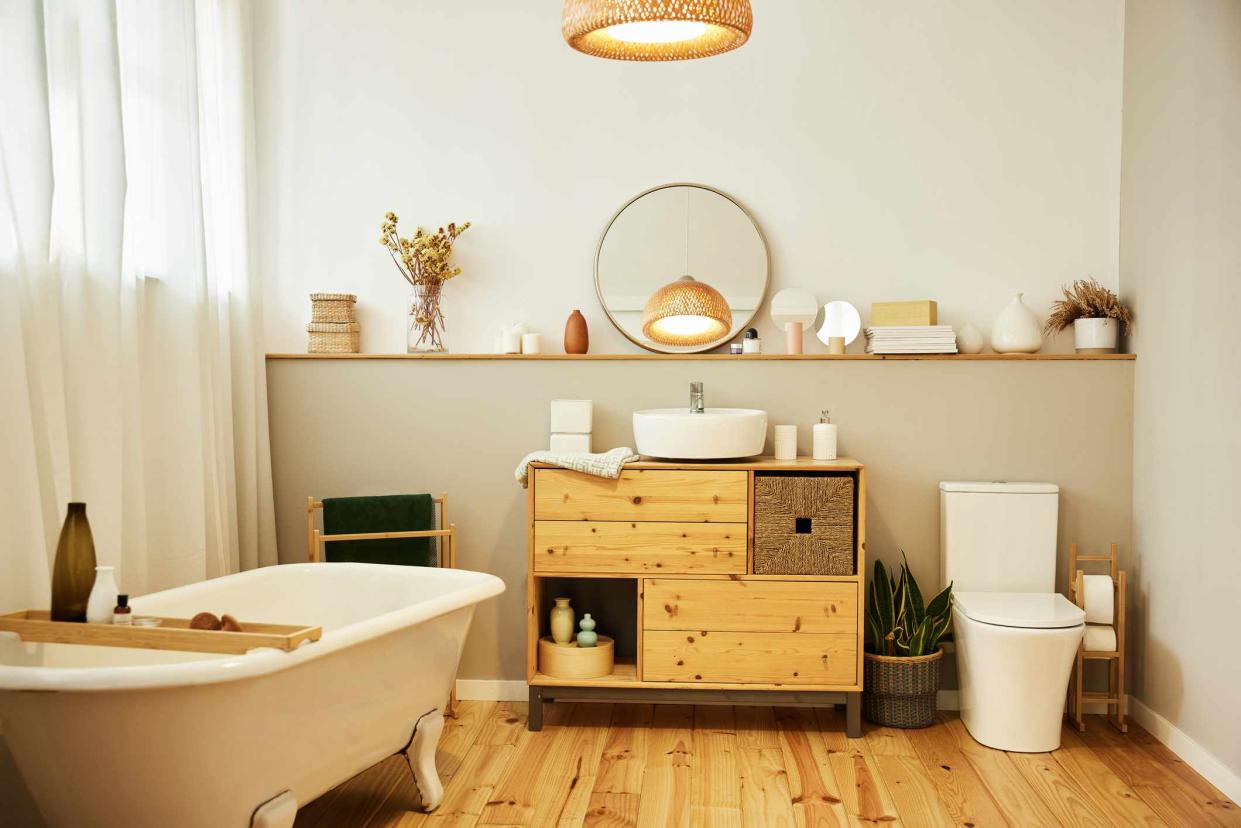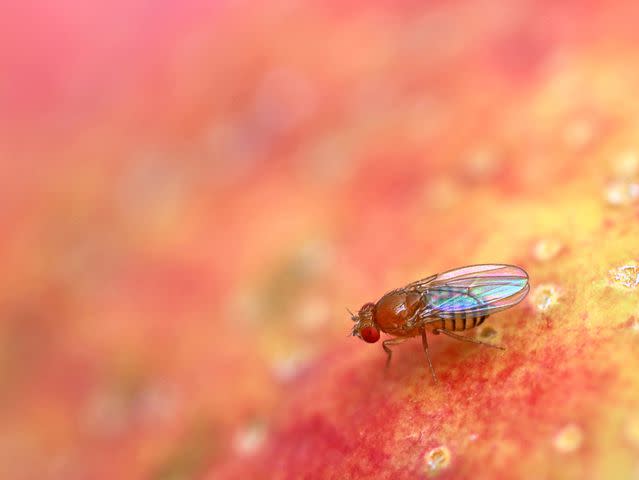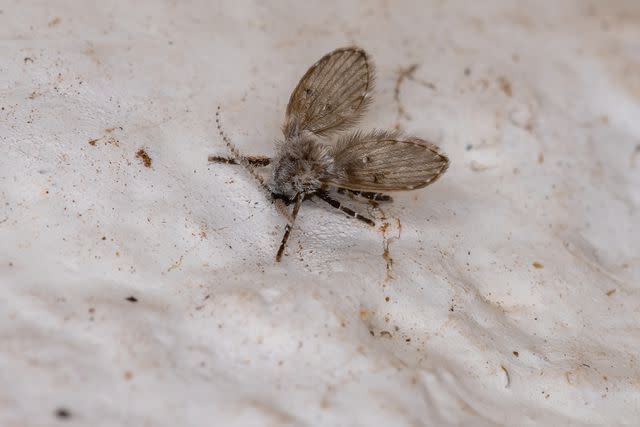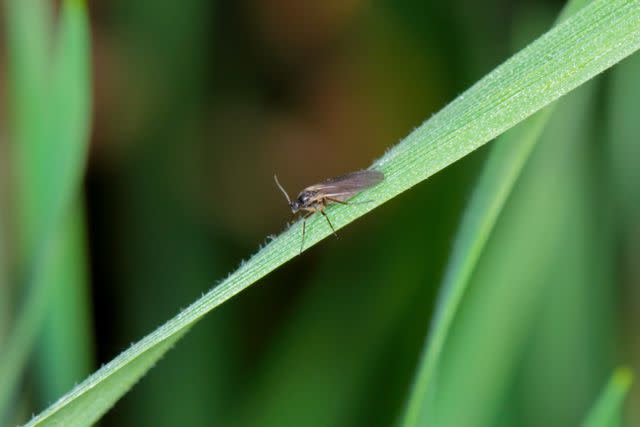How to Get Rid of Fruit Flies in Your Bathroom

Morsa Images
Bathrooms are a place for self-care, relaxation, and de-stressing. Unfortunately, they also happen to be a place where small flies can congregate, including fruit flies, drain flies, and fungus gnats. Which tiny flies are you seeing in your bathroom, and what can you do to get rid of them asap?
If you think you're seeing fruit flies in your bathroom, there are a few simple and all-natural steps to make your bathroom fly-free once again.
What Do the Fruit Flies in Your Bathroom Look Like?
Fruit flies in the bathroom can cause frustration, especially if they won't go away! The main problem? Fruit flies are so small it can be difficult to tell them apart from other tiny flies, especially the drain fly and the fungus gnat. So the question is, what exactly do the fruit flies in your bathroom look like? This is an essential question because different flies require different methods of control.
Fruit Flies
Fruit flies are small, tan and grey insects with tiny wings and reddish eyes. Fruit flies do not sting or bite, but they are super annoying, especially when they're getting into things. Fruit flies are typically associated with fermentation. They're attracted to things like:
rotting fruit and other food
fermented drinks like kombucha and wine
items containing vinegar (especially fruit vinegars)
Other fermented items, such as soy sauce
Given what they like to feed on, fruit flies are typically found in the kitchen but occasionally pop up in the bathroom, especially if the population of fruit flies in the kitchen is substantial or if something in the bathroom is attracting them.

Andreas Häuslbetz/Getty Images
A fruit flyDrain Flies
Drain flies are a widespread problem in bathrooms. Unfortunately, they are also tiny. Confusing them with fruit flies or gnats is easy unless you get an up-close look.
In terms of appearance, drain flies are small, moth-like insects. They have teensy, powdery, heart-shaped wings and fluffy, feathery antennae. From their description, they almost sound cute, until they show up and flutter around your bathroom by the dozen at all hours.
Drain flies love the drain scum—which is rotting organic matter—in our drains that they not only consume but also lay eggs in. The bathroom is the perfect place for soapy scum to build up in the drains, so cleaning the drains semi-regularly is vital to keep drain flies away.
Water leaks can also create drain fly issues, so check under the sink, behind the toilet, and in the crawlspace to ensure no standing water is keeping them around.

ViniSouza128/Getty Images
A drain flyFungus Gnats
Fungus gnats are not a fly, but they are capable of flying and regularly infest the inside of homes, especially homes with houseplants.
Fungus gnats, fruit flies, and drain flies are easily confused for each other due to their small size, but close-up, fungus gnats look more like tiny mosquitoes. They do not bite, but they like moist areas and especially love houseplants.
The fungus gnat feeds on rotting organic material in the soil and while they're generally found in the dirt outside, they can become a year-round issue in homes with houseplants. If you don't have any plants in the bathroom, but you do in other areas of your home, you might occasionally find a few fungus gnats around the bathroom window.

Tomasz Klejdysz/Getty Images
A fungus gnat3 Ways to Get Rid of Fruit Flies and Other Small Flies in Your Bathroom
In general, fly control is about reducing potential feeding and breeding sources to keep the flies at bay. However, when it comes to keeping small flies like fruit flies out of your bathroom, you'll need to determine which fly you're dealing with so you know what areas to target with your control efforts.
Here are some tips for reducing fruit flies, drain flies, and fungus gnats around your house to keep your bathroom peaceful and free of flies!
Start in the Kitchen to Tackle Fruit Flies
Fruit flies can wander into the bathroom but often originate in the kitchen, where they can find fermenting, rotting food.
Fruit flies are often brought in on produce from the grocery store. Fruit flies are especially prone to coming home on sweet fruit like pineapples and melons. If you look closely at the skin of these fruits, you might even be able to spot small clusters of tiny white fruit fly eggs.
You'll need to address any potential attractants if you want to get rid of fruit flies in your bathroom and kitchen. This includes:
If you have kitchen compost, ensure that it's taken out regularly and that the compost container has a sealing lid
Keep your kitchen drains clean, including your garbage disposal
Wash, peel, and chop fruit and store in the refrigerator when possible
Keep vinegar and soy sauce in bottles with tight caps or seals
Be sure to keep food scraps cleaned up from the counters and sink
Getting rid of fruit flies in the kitchen means they'll finally stop making their way into the bathroom, too.
If you've cleaned up potential sources and you're still seeing fruit flies, you could make a fruit fly trap to reduce the population more quickly.
Clean Your Drains Regularly
Clean drains are important when managing small flies like fruit flies and drain flies.
In your kitchen drains, fruit flies are attracted to food scum and rotting organic material. Drain flies feed on slime and scum, laying their eggs, reproducing quickly, and being generally annoying. They are common in bathrooms and laundry rooms but can also pop up in kitchens, especially if there's a leaky pipe under the sink or behind the dishwasher.
To clean your drains, use a stiff cleaning brush like a drain or toilet brush combined with a drain cleaner and give them a good scrub. If you incorporate this into your regular cleaning routine, drain flies will think twice about hanging out in your home!
Top Your Houseplants with Sand
If fungus gnats are the guilty little party showing up in your bathroom, it's time to show your houseplants some love...or lack thereof.
Overwatering a houseplant's soil can lead to fungus gnat activity, so make sure to let the soil dry out a little between waterings. You can even overturn the top inch or so of soil and allow it to dry out, which will also dry out any fungus gnat eggs.
You can also put a layer of sand on top of your houseplant soil, allowing the water to drain better and protecting the soil underneath from those pesky fungus gnats and their eggs.
Signs of a Fruit Fly Infestation
If fruit flies are showing up in your bathroom, this is a sign that there is could be an infestation brewing somewhere else. Fruit flies don't typically choose to hang out in bathrooms, so it's time to investigate, starting with the kitchen and the areas where you eat or drink.
Sometimes, fruit flies can be confusing, because they are known to pop up in even the cleanest of kitchens. If your kitchen is exceptionally clean and you still have fruit flies, it's time to start thinking outside the box.
Check the following places for fruit fly feeding and breeding sites:
The underside of the rubber garbage disposal flange
The bottom of the garbage can
Old food waste, including dirty dishes and cups
The compost bin
Just keep in mind that small flies in the bathroom don't necessarily indicate fruit flies. You could very well be seeing drain flies, or even fungus gnats depending on whether you have houseplants.
What Causes Fruit Flies in the Bathroom?
Fruit flies in the bathroom point to something fermenting nearby. The bathroom doesn't provide fruit flies with what they need to survive, but if there's a severe fruit fly issue in the kitchen or something nearby attracts them, they could wander into the bathroom.
Even a leftover cup from your favorite fruit tea or the tops of the strawberries you ate for a snack are enough to attract fruit flies if left to sit out. Forget them for a couple of weeks, and the fruit flies will feast and lay eggs. From there, it's only a matter of time before they enter the bathroom.
Keep in mind that drain flies are confused for fruit flies all the time. Drain flies are prevalent bathroom pests. They feed on rotting organic matter, including any drain slime or moist wood with unknown leaks. Cleaning the drains regularly and addressing moisture issues can help eliminate drain flies.
How to Keep Fruit Flies Out of the Bathroom
To keep fruit flies out of the bathroom, start by keeping them out of the kitchen. Wash, cut, and store fruit as soon as possible after bringing it home, so it doesn't sit out on the counter for too long, and make sure your sink and counters are clear of dishes and food scraps.
If the 'fruit flies' you're seeing are actually drain flies, you'll need to clean your drains and address any potential moisture issues, including leaky sink pipes and standing water in the crawlspace.
Also, ensure your houseplants aren't overwatered, and the soil drains well; otherwise, you could end up with fungus gnats inside.
Frequently Asked Questions
Where do fruit flies in the bathroom come from?
Fruit flies in the bathroom likely wandered in from the kitchen, but you may be seeing drain flies, another tiny, pesky fly common in bathrooms. They feed on and lay eggs in the scum that builds up in your drains.
Will fruit flies in the bathroom go away on their own?
Whether you're dealing with fruit flies or some other small fly, they are not likely to go away on their own. The source of the fly issue will need to be found and addressed if you want the flies to go away. Traps can help reduce the visible population, but as long as the source remains, the flies will, too.
Why are there fruit flies in my bathroom?
There are flies in your bathroom because something is attracting them to the space. If they're fruit flies, there's either food rot or fermentation nearby. If they're drain flies, they're likely coming from the drains, and if they're fungus gnats, they could be reproducing in your houseplant soil.

